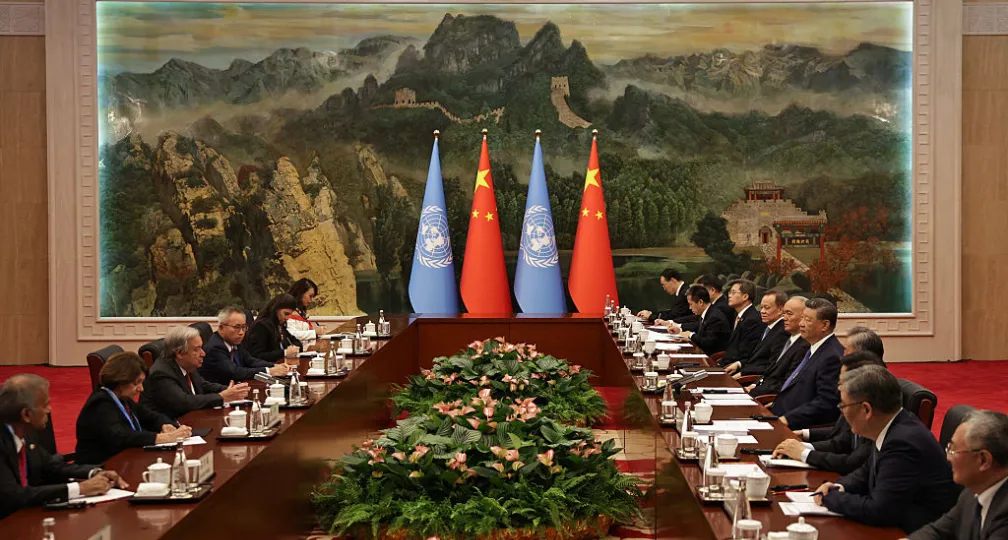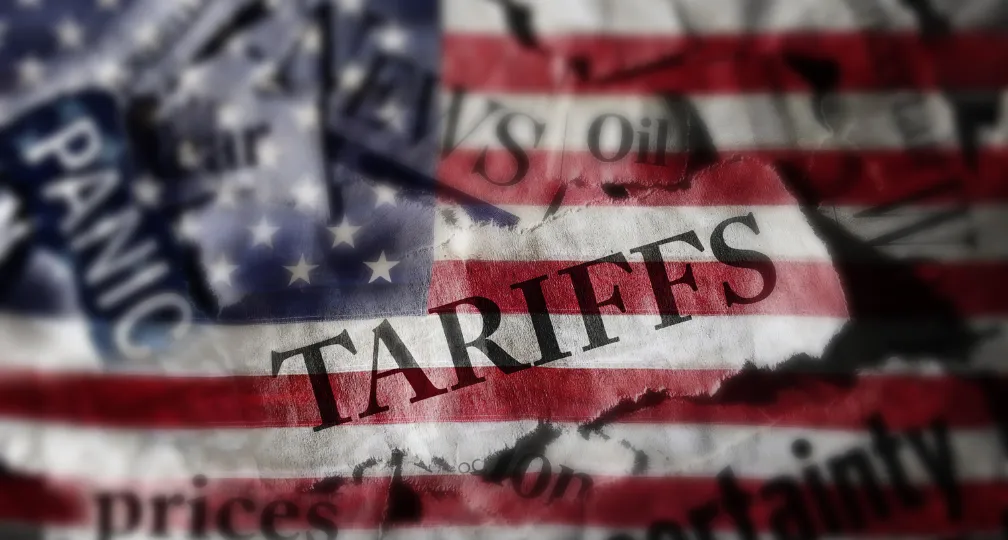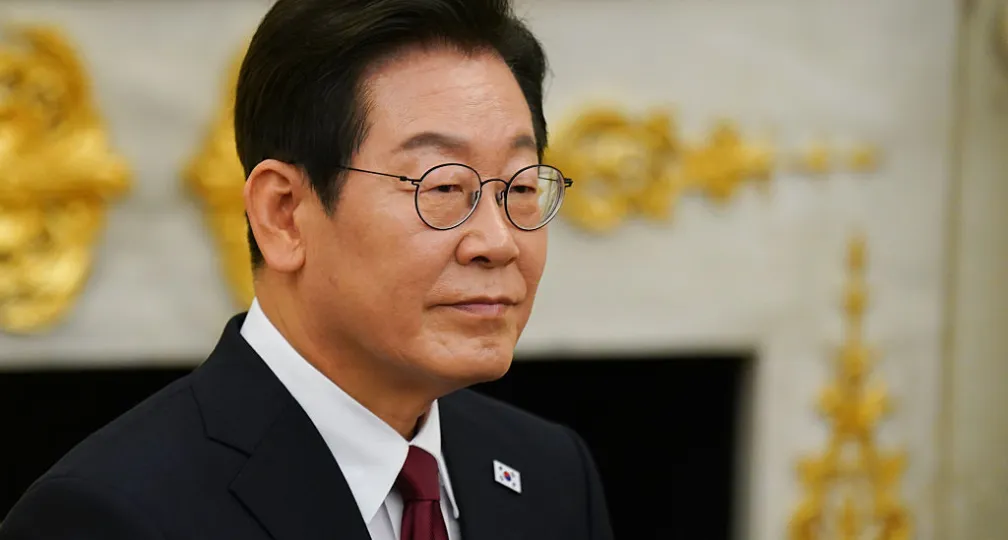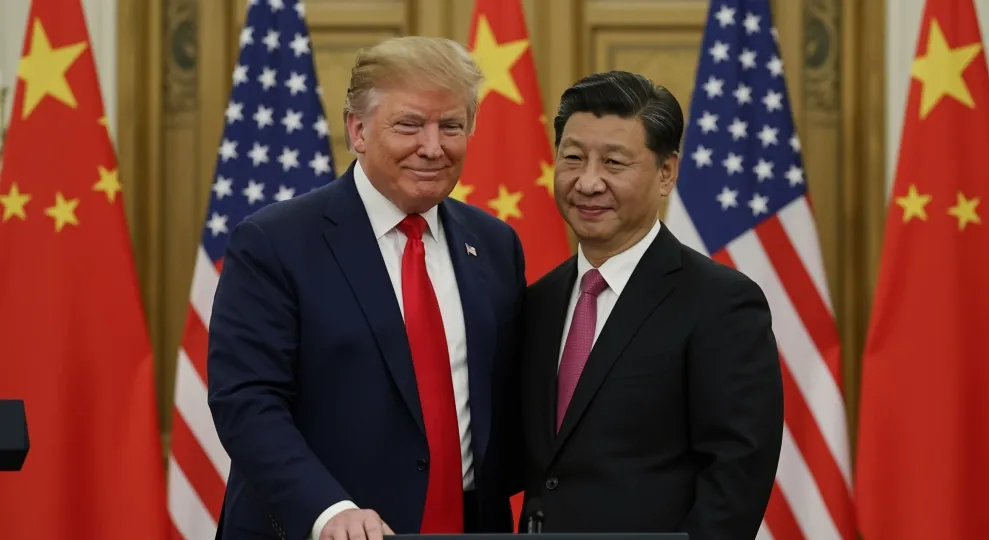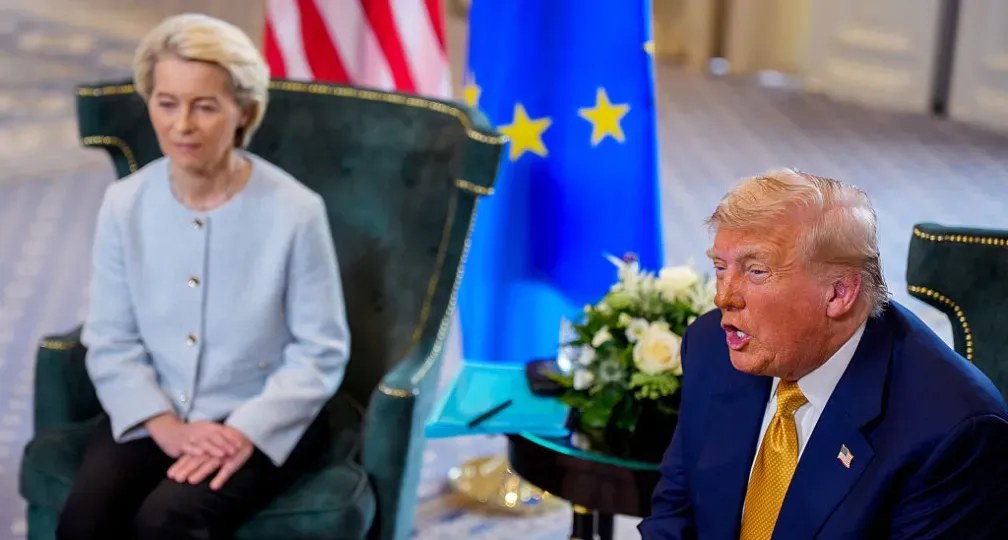How can Japan engage with Pacific nations amid U.S.-China competition?
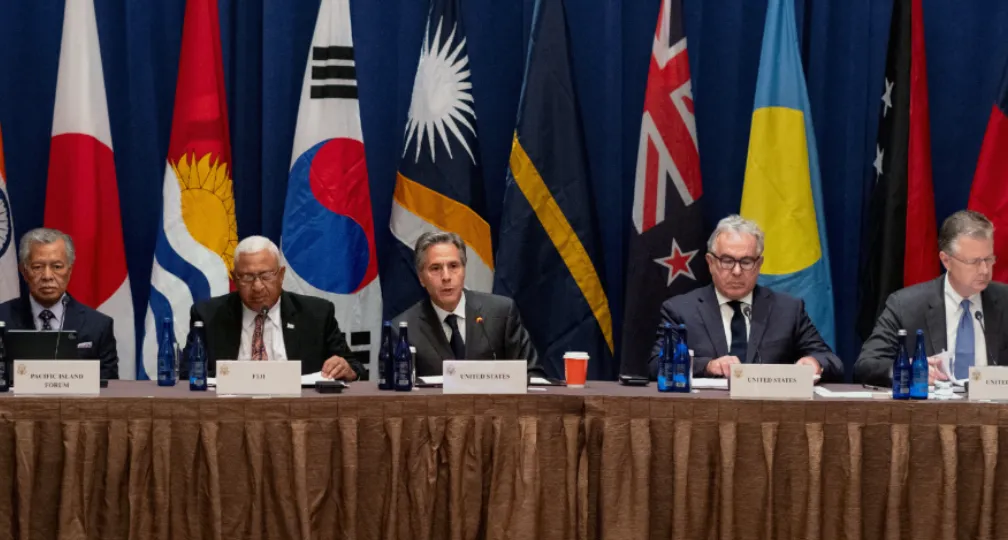
Visiting Fellow, Asia Pacific Initiative
The Solomon Islands came under the spotlight earlier this year when the country signed a security pact with China in April, which came as a shock to the United States, Australia and New Zealand.
The new treaty itself has not been made public. However, what appeared to be a draft of the deal that had been leaked through social media in late March can be interpreted as allowing China to dock warships regularly in the Solomon Islands and deploy its police and soldiers to the islands to help maintain order.
The U.S., Australia and New Zealand are increasingly on alert, viewing the latest signing of the treaty as Beijing’s attempt to gain a military foothold in the South Pacific.
Considering that it would affect Japan’s national interests and security, it’s important to discuss how different countries are behaving in the Pacific islands and under what goals, and what are the consequences for Japan’s diplomacy.
China’s increasing presence
Both Beijing and Washington have been showing greater interest in the Pacific islands, a group of relatively small states scattered over a wide area in the Pacific Ocean, amid China’s maritime expansion.
According to a 2018 report on China’s engagement in the Pacific nations released by the U.S.-China Economic and Security Review Commission (USCC) in Washington, Beijing’s heightened engagement in the region is largely driven by its strategic interests in the following three areas:
・Maintaining access to replenishment for its maritime expansion.
・Reducing Taiwan’s international space.
・Monitoring and surveilling U.S. submarine activities.
China has constantly been involved in the region since the 2000s, strengthening its relationship with island nations, while U.S. interest in the region remained low.
In 2006, China hosted the China-Pacific Island Countries Economic Development and Cooperation Forum and announced that it would provide 3 billion yuan ($413 million) of preferential loans to boost cooperation.
Beijing also pledged to expand economic assistance to the region through its Belt and Road initiative announced in 2013.
According to the Stockholm International Peace Research Institute, China provided $1.5 billion in official development assistance to Pacific island countries between 2013 and 2018, making it the second largest donor after Australia in that period.
The USCC report also said that China increased pressure on Taiwan after the pro-independence Democratic Progressive Party’s administration was launched there in 2016, and stepped up moves to cut off relations between Taiwan and countries in the region that have diplomatic ties with the island.
In 2019, the Solomon Islands and Kiribati officially established diplomatic ties with Beijing after revoking their diplomatic recognition of Taiwan.
Four countries in the region — Palau, the Marshall Islands, Nauru and Tuvalu — still maintain diplomatic ties with Taiwan, but media reports say China is also calling on those countries to switch allegiance.
Beijing’s attempts to increase influence in the region can also be seen in the area of military security.
China has proposed upgrading a largely disused airstrip built by the U.S. during World War II on Kanton, one of the islands of Kiribati. Though Kiribati has said it is a nonmilitary project, the Australian Strategic Policy Institute pointed out that the facility could be used for purposes other than civilian use.
Also in May, during a conference of foreign ministers of China and Pacific island countries, Beijing proposed signing a draft communique for a regional economic and security deal, although the deal was shelved due to opposition from some countries.
Washington’s backlash
The U.S., which had been taking a wait-and-see approach to China’s attempts to expand its influence in the Pacific, began showing strong concern over recent moves that implied Beijing was pursuing greater military reach.
Kiribati, for instance, is located some 3,000 kilometers from Hawaii, where the U.S. Indo-Pacific Command is headquartered, and on an access route linking the U.S. and Australia.
The Australian Strategic Policy Institute said that if China owns and builds up the airfield in Kiribati, then it can use it as it likes, and this would give Beijing some advantage in the event of any Pacific contingencies.
China’s signing of a security agreement with the Solomon Islands, in particular, led the U.S. to accelerate its moves.
During a meeting of the Pacific Islands Forum (PIF) — the region’s political and economic policy organization — held in July, U.S. President Joe Biden’s administration announced the establishment of new embassies in Kiribati and Tonga. It also hosted the first summit meeting with Pacific nations in September.
At the leaders’ meeting, the U.S. government announced $810 million in new funding for Pacific island countries and the first-ever Pacific Partnership Strategy.
Washington is also enhancing its security-related activities in three Micronesian countries — Palau, the Federated States of Micronesia (FSM) and the Marshall Islands.
The U.S. signed security arrangements known as the Compact of Free Association with the three countries in the 1980s and 1990s, making Washington responsible for the security of those nations and giving it exclusive rights to maintain defense assets in their territorial lands and waters.
Currently, the U.S. is working to build military facilities in Palau and the FSM.
Washington plans to install air and maritime awareness radar systems in Palau, and Congress approved the awarding of the fiscal 2022 budget to the Department of Defense for the plan.
Furthermore, according to the FSM Embassy in the U.S., the governments of the U.S. and the FSM held high-level defense and security talks in July 2021 and agreed to cooperate on how the presence of American armed forces will be built up within the country.
U.S. Armed Forces exercises are also being stepped up in the region.
In June, the U.S. Indo-Pacific Command announced that U.S. forces conducted high-level, operational and comprehensive training in Palau as part of their Valiant Shield biennial field training exercise. The drill included performing High Mobility Artillery Rocket System (HIMARS) Rapid Infiltration (HI-RAIN) training, flight testing of MQ-9 (Reaper) remotely piloted aircraft and live-fire training of PAC-2 Patriot surface-to-air missiles using radar data from U.S. Air Force F-35A aircraft.
Amid such moves by China and the U.S., some Pacific nations are showing concern, but at the same time appear to be acting smartly in diplomacy to gain benefits from both sides.
The countries are acting based on bitter lessons from the Cold War. Western countries such as the U.S. and Australia strengthened engagement in the region prompted by the Soviet Union’s activities. After the Soviet Union collapsed, however, they greatly reduced that engagement.
Such a situation puts the U.S. in a dilemma, as the more Washington boosts engagement in the region in an effort to deter China, the more distant Pacific island countries become.
Equal partnership is key
The Pacific island countries are strategically important for Japan, as they are located on access routes to like-minded countries such as the U.S. and Australia, and, in recent years, some submarine cables — critical infrastructure of the digital age — have been laid through the region.
It is important for Japan’s national interests that the region maintains rules-based international order and remains free and open.
Then what should Japan aim for in its engagement with the region in the era of great power competition between the U.S. and China?
First, Japan should gain understanding of the Pacific island countries that its activities represent persistent efforts to realize stability and prosperity in the region, making it clear that they are not aimed at containing China or conforming to the U.S.
Secondly, Japan must cooperate with its partner countries so that each of them can share roles effectively according to their strengths.
What is particularly important for Japan is to act on a basic posture of building equal partnerships with the countries in the region.
The region’s top priority is to ensure human security by tackling such issues as climate change, natural disasters, unemployment and poverty, and not military security or great power competition.
Aware of the situation, Japan has worked to deal with such issues as an island nation that shares common challenges with others in the region.
Japan’s way forward should not be “confrontation with China,” but “regional safety and prosperity.”
Japan has hosted the triennial Pacific Islands Leaders Meeting (PALM) since 1997 to show its posture of focusing on an equal relationship with other countries.
Now that the world is being affected by the great power competition between the U.S. and China, it is ever more important for Japan to stress the significance of maintaining an equal partnership with the region.
While working to further advance its cooperative efforts with the U.S., Australia and New Zealand to make them more effective, Japan should make sure that the region will not get involved in a confrontation with China.
Western countries, which previously were not on the same page regarding Pacific island countries, are now moving to offer assistance to the region in cooperation with Japan.
In June, Washington launched the Partners in the Blue Pacific initiative together with Japan, the United Kingdom, Australia and New Zealand as a mechanism to more effectively and efficiently support the goals of the Pacific region. Foreign ministers of the member and observer countries and ministers of the Pacific island countries met in New York in September.
A joint statement was issued after the meeting, reinforcing that the new mechanism will be guided by the PIF’s 2050 Strategy for the Blue Pacific Continent.
From now on, Japan will be expected to cooperate with its partner countries and become the driving force of this strategy.
As an equal partner in the region, Japan must clearly demonstrate through action its stance of working together with Pacific island countries to tackle various challenges and maintain a free and open Indo-Pacific region.
(Photo Credit: Reuters / Aflo)
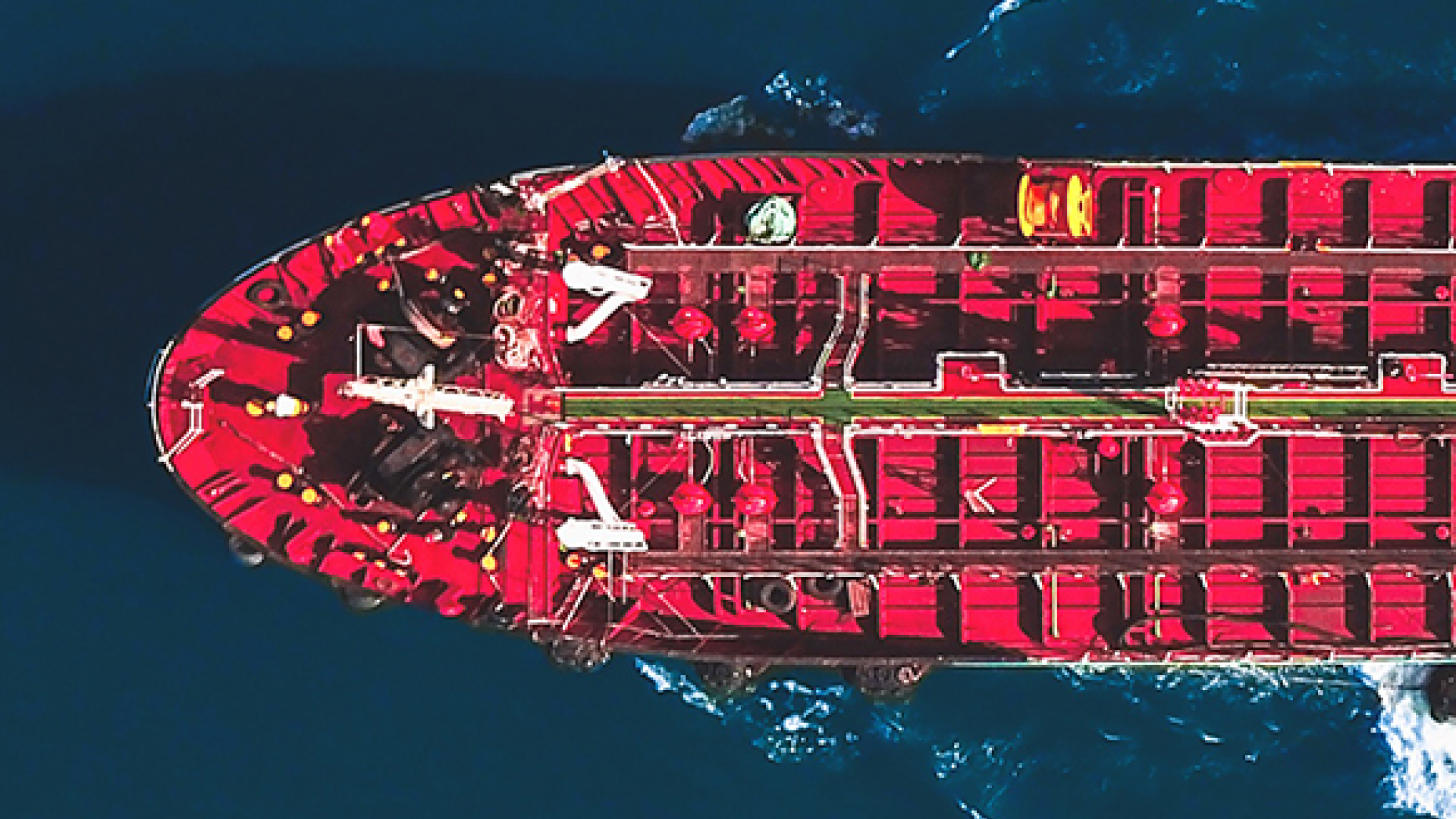
Geoeconomic Briefing
Geoeconomic Briefing is a series featuring researchers at the IOG focused on Japan’s challenges in that field. It also provides analyses of the state of the world and trade risks, as well as technological and industrial structures (Editor-in-chief: Dr. Kazuto Suzuki, Director, Institute of Geoeconomics (IOG); Professor, The University of Tokyo).
Disclaimer: The opinions expressed in Geoeconomic Briefing do not necessarily reflect those of the International House of Japan, Asia Pacific Initiative (API), the Institute of Geoeconomics (IOG) or any other organizations to which the author belongs.
-
 Japan-India Defense in a Fragmenting Indo-Pacific2025.12.10
Japan-India Defense in a Fragmenting Indo-Pacific2025.12.10 -
 The “Economic Security is National Security” Strategy2025.12.09
The “Economic Security is National Security” Strategy2025.12.09 -
 India - Japan: The Glimpse of a Shared Vision2025.12.05
India - Japan: The Glimpse of a Shared Vision2025.12.05 -
 Beijing’s ‘Globalist’ Agenda Under Trump 2.02025.12.01
Beijing’s ‘Globalist’ Agenda Under Trump 2.02025.12.01 -
 Trump’s Tariffs Might Be Here to Stay – No Matter Who’s in Power2025.11.28
Trump’s Tariffs Might Be Here to Stay – No Matter Who’s in Power2025.11.28
 Event Report: The Trump Tariffs and Their Impact on the Japanese Economy2025.11.25
Event Report: The Trump Tariffs and Their Impact on the Japanese Economy2025.11.25 The Real Significance of Trump’s Asia Trip2025.11.14
The Real Significance of Trump’s Asia Trip2025.11.14 The “Economic Security is National Security” Strategy2025.12.09
The “Economic Security is National Security” Strategy2025.12.09 The long road to a South Korea-U.S. trade deal2025.11.26
The long road to a South Korea-U.S. trade deal2025.11.26 India’s Structural Reforms: Opportunities and Risks2025.11.14
India’s Structural Reforms: Opportunities and Risks2025.11.14





